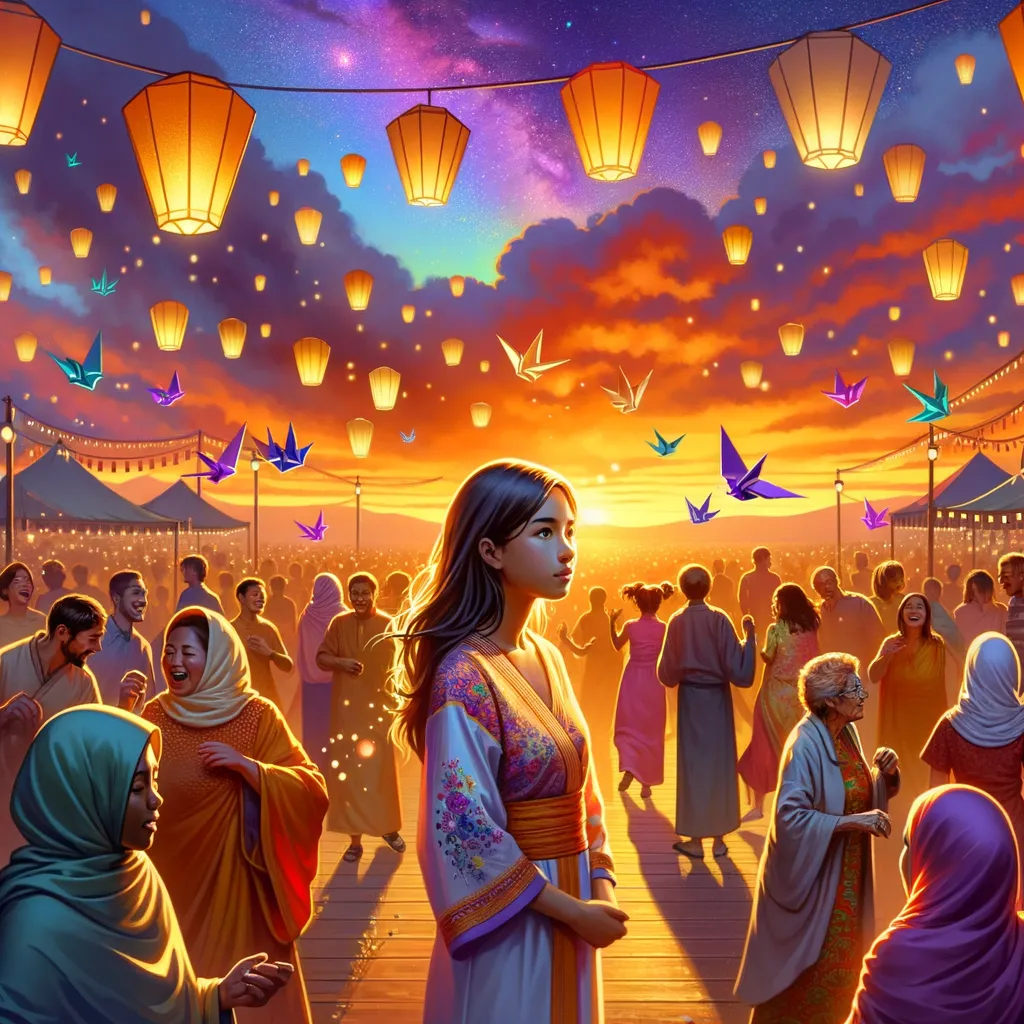Unraveling Threads: A Journey into Weaving’s Heart
In an old market, rich with the scents of spices and fresh bread, a moment of discovery unfolded as an elderly woman deftly wove a tapestry, each thread whispering tales of life and resilience. Drawn to her modest booth, I felt a stirring desire to revive the ancient craft of hand-weaving, realizing it was not just about creating art, but about embracing a sanctuary of mindfulness in a fast-paced world. As I imagined the tactile dance of fibers beneath my fingers, I understood that weaving was a dialogue with the past, a connection to countless artisans whose stories lay etched in every intricate pattern. With each choice of thread, a new narrative emerged, revealing layers of identity and expression, transforming the loom into a bridge that fostered community and shared wisdom. Leaving the market, I carried with me the profound question of what stories awaited to be woven into the fabric of our lives, igniting a spark to embrace the art of creation anew.
In the memory of January 25, 2008, I found myself wandering through an old market, the kind that seemed to whisper secrets of a bygone era. The air was thick with the scent of spices and fresh bread, mingling with the laughter of vendors and the chatter of patrons. Among the vibrant stalls, my eyes were drawn to a modest booth draped in faded fabric, where an elderly woman sat quietly, her hands skillfully weaving a tapestry. Each thread told a story, weaving together not just colors but the very essence of life itself. At that moment, I realized how much I longed to revive the lost art of hand-weaving, a craft that felt both foreign and familiar.
Weaving, in its essence, is a dance between patience and creativity. The rhythmic motion of the shuttle, the gentle tug of the warp, and the interplay of colors create a tapestry that mirrors life’s complexities. In a world dominated by mass production and digital artistry, the tactile experience of weaving offers a serene refuge, a place where time slows down and intentions manifest into something tangible. Each piece becomes a vessel of emotion, a medley of thoughts, dreams, and memories, woven together in intricate patterns that speak to the soul.
The beauty of hand-weaving lies not only in its end product but in the process itself. As I imagined my fingers gliding over the rough fibers, I felt a surge of connection to the countless artisans who had come before me. They worked in silence, pouring their hearts into each creation, transforming simple threads into powerful narratives. It’s an act of creation that transcends time, embodying the spirit of resilience and tradition. The stories etched into every weave become a reflection of the weaver’s journey, a testament to the art of living.
Yet, the revival of this craft is not merely about nostalgia. In our fast-paced, technology-driven lives, hand-weaving offers a sanctuary where mindfulness reigns. The act of focusing on each thread, each movement, allows the mind to quieten, creating space for introspection. It becomes a meditation, a practice that reconnects us to the present moment. As the world rushes by, the loom stands as a reminder of the importance of slowing down, of savoring the journey rather than fixating solely on the destination.
The surprise of weaving lies in its endless possibilities. Each choice of thread color, texture, and pattern is a reflection of the weaver’s personality and vision. Just as life is a series of choices, so too is the tapestry. With every decision, a new narrative unfolds, revealing layers of meaning that were once hidden. The act of creation transforms into a dialogue between the weaver and the material, an exploration of identity and expression that is both personal and universal.
As I delved deeper into the world of weaving, I discovered its ability to foster community. Workshops and gatherings filled with laughter and shared stories create bonds that transcend generations. The act of teaching others to weave becomes a form of storytelling, passing down not only techniques but also values and traditions. In a society that often feels fragmented, the loom can become a bridge, connecting hearts and minds through the shared experience of creation.
Yet, the allure of hand-weaving is not without its challenges. The initial struggle to master the loom, to understand the intricacies of tension and pattern, mirrors the trials we face in life. It teaches resilience in the face of failure, encouraging a mindset that embraces imperfection. Each mistake becomes a lesson, each misstep a stepping stone towards mastery. The beauty of weaving lies in its imperfections, which reflect the authenticity of the human experience, reminding us that we are all beautifully flawed.
As I pondered the potential of reviving this art, I felt a sense of urgency. In a world that often prioritizes convenience over craftsmanship, the preservation of such traditions becomes an act of rebellion. It is a commitment to honoring our past while forging a path into the future. By weaving together the threads of history, culture, and personal expression, we can create a vibrant tapestry that celebrates our shared humanity.
In the end, as I stood at that market booth, watching the elderly woman work her magic, I understood that my desire to weave was about more than just creating beautiful textiles. It was a yearning to connect, to reflect, and to find meaning in the act of creation. As I left that market, the question lingered in my mind: what stories are waiting to be woven into the fabric of our lives, and how can we embrace the art of creation in a world that often forgets its significance?
In the delicate dance of threads and colors, the art of weaving unfolds a tapestry of connection, inviting souls to pause, reflect, and rediscover the beauty of creation amidst the rush of life.



